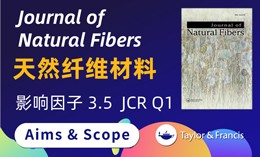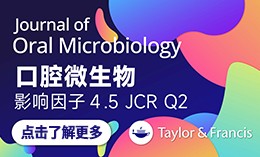Microbiology ( IF 1.5 ) Pub Date : 2020-10-01 , DOI: 10.1134/s0026261720050057 A. G. Bulaev
Abstract—
The goal of the present work was to study the oxidation of sulfide mineral pyrrhotite by members of microbial groups predominant in biohydrometallurgical processes (mixotrophic iron- and sulfur-oxidizing bacterium Sulfobacillus thermosulfidooxidans strain VKMV 1269T, autotrophic sulfur-oxidizing bacterium Acidithiobacillus caldus strain MBC-1, and heterotrophic iron- and sulfur-oxidizing archaeon Acidiplasma sp. strain MBA-1) to evaluate the role of microorganisms with different physiological properties in the leaching of this mineral. It was shown that pyrrhotite was most actively leached by the sulfur-oxidizing strain Acidithiobacillus caldus MBC-1, as well as by mixed cultures in which this strain was present: S. thermosulfidooxidans VKMV 1269T + A. caldus MBC-1 and Acidiplasma sp. MBA-1 + A. caldus MBC-1. These cultures leached 70, 43, and 60% of pyrrhotite, respectively, after 30 days of the experiment. In experiments with pure cultures S. thermosulfidooxidans VKMV 1269T, Acidiplasma sp. MBA-1 and a mixed culture S. thermosulfidooxidans VKMV 1269T + Acidiplasma sp. MBA-1, the rates of pyrrhotite leaching were significantly lower: 29, 37 and 30%, respectively. An experiment on sulfur biooxidation by pure cultures of the studied microorganisms demonstrated that A. caldus strain MBC-1 was the most active sulfur oxidizer. Thus, it was shown that the bioleaching of pyrrhotite was carried out mainly by sulfur-oxidizing microorganisms, with sulfur biooxidation as the most important process. Active biooxidation of the Fe2+ ion by iron-oxidizing microorganisms did not increase activity of pyrrhotite oxidation, but, on the contrary, led to inhibition of pyrrhotite leaching. Thus, active biooxidation of sulfur, which is formed during the leaching of pyrrhotite, was a factor determining the leaching rate for this sulfide mineral.
中文翻译:

中度嗜温微生物对硫铁矿的生物氧化作用
摘要—
本工作的目的是研究在生物湿法冶金过程中(主要是混合营养铁和硫氧化细菌热硫氧化硫细菌VKMV 1269 T,自养硫氧化细菌酸杆菌硫杆菌MBC-)对微生物硫化物矿物硫黄铁矿的氧化作用。1,和异养铁和硫氧化古细菌酸性支原体菌株MBA-1),以评估具有不同生理特性的微生物在浸出该矿物中的作用。结果表明,硫黄铁矿最易被硫氧化性酸性嗜酸杆菌发酵。MBC-1,以及由混合培养物,其中该菌株是存在:S. thermosulfidooxidans VKMV 1269 Ť + A.喜温MBC-1和Acidiplasma藻。MBA-1 + A. caldus MBC-1。在实验30天后,这些培养物分别浸出了70%,43%和60%的黄铁矿。在用纯培养物进行的实验中,热硫氧化硫链球菌VKMV 1269 T,Acidiplasma sp。。MBA-1和混合培养物S. hotsulfidooxidans VKMV 1269 T + Acidiplasmasp。MBA-1的黄铁矿浸出率明显较低:分别为29%,37%和30%。通过对所研究的微生物进行纯培养而对硫进行生物氧化的实验表明,卡尔德斯曲霉MBC-1是活性最高的硫氧化剂。因此,表明黄铁矿的生物浸提主要是通过硫氧化微生物进行的,其中硫生物氧化是最重要的过程。铁氧化微生物对Fe 2+离子的主动生物氧化作用不会增加黄铁矿的氧化活性,但相反,会抑制黄铁矿的浸出。因此,硫铁矿浸出过程中形成的硫的主动生物氧化是决定该硫化物矿物浸出速率的一个因素。



























 京公网安备 11010802027423号
京公网安备 11010802027423号